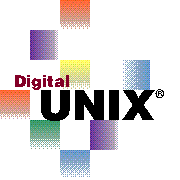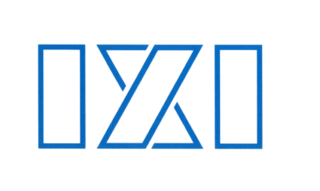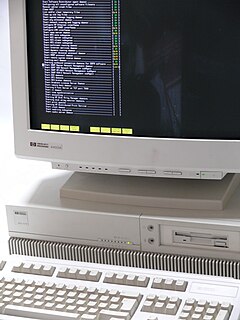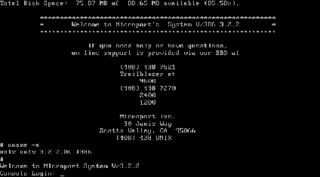Related Research Articles

AIX is a series of proprietary Unix operating systems developed and sold by IBM for several of its computer platforms. Originally released for the IBM RT PC RISC workstation in 1986, AIX has supported a wide variety of hardware platforms, including the IBM RS/6000 series and later Power and PowerPC-based systems, IBM System i, System/370 mainframes, PS/2 personal computers, and the Apple Network Server. It is currently supported on IBM Power Systems alongside IBM i and Linux.

Tru64 UNIX is a discontinued 64-bit UNIX operating system for the Alpha instruction set architecture (ISA), currently owned by Hewlett-Packard (HP). Previously, Tru64 UNIX was a product of Compaq, and before that, Digital Equipment Corporation (DEC), where it was known as Digital UNIX.

Xenix is a discontinued version of the Unix operating system for various microcomputer platforms, licensed by Microsoft from AT&T Corporation in the late 1970s. The Santa Cruz Operation (SCO) later acquired exclusive rights to the software, and eventually replaced it with SCO UNIX.
This article presents a timeline of events in the history of computer operating systems from 1951 to the current day. For a narrative explaining the overall developments, see the History of operating systems.
Convergent Technologies was an American computer company formed by a small group of people who left Intel Corporation and Xerox PARC in 1979. Among the founders were CEO Allen Michels, VP Engineering Bob Garrow, head of marketing Kal Hubler, and operating system architect Ben Wegbreit. Convergent was primarily an OEM vendor with their computers resold by other manufacturers such as ADP, AT&T, Burroughs, Four-Phase Systems, Gould, Mohawk, Monroe Data Systems, NCR, and Prime. The company was purchased by Unisys in 1988.

The Santa Cruz Operation, Inc. was an American software company, based in Santa Cruz, California, that was best known for selling three Unix operating system variants for Intel x86 processors: Xenix, SCO UNIX, and UnixWare.

IXI Limited was a British software company that developed and marketed windowing products for Unix, supporting all the popular Unix platforms of the time. Founded in 1987, it was based in Cambridge. The product it was most known for was X.desktop, a desktop environment graphical user interface built on the X Window System. IXI was acquired by the Santa Cruz Operation (SCO) in February 1993.

UnixWare is a Unix operating system. It was originally released by Univel, a jointly owned venture of AT&T's Unix System Laboratories (USL) and Novell. It was then taken over by Novell. Via Santa Cruz Operation (SCO), it went on to Caldera Systems, Caldera International, and The SCO Group before it was sold to UnXis. UnixWare is typically deployed as a server rather than a desktop. Binary distributions of UnixWare are available for x86 architecture computers. UnixWare is primarily marketed as a server operating system.

Unix System V is one of the first commercial versions of the Unix operating system. It was originally developed by AT&T and first released in 1983. Four major versions of System V were released, numbered 1, 2, 3, and 4. System V Release 4 (SVR4) was commercially the most successful version, being the result of an effort, marketed as Unix System Unification, which solicited the collaboration of the major Unix vendors. It was the source of several common commercial Unix features. System V is sometimes abbreviated to SysV.
OpenSSI is an open-source single-system image clustering system. It allows a collection of computers to be treated as one large system, allowing applications running on any one machine access to the resources of all the machines in the cluster.
In the 80386 microprocessor and later, virtual 8086 mode allows the execution of real mode applications that are incapable of running directly in protected mode while the processor is running a protected mode operating system. It is a hardware virtualization technique that allowed multiple 8086 processors to be emulated by the 386 chip; it emerged from the painful experiences with the 80286 protected mode, which by itself was not suitable to run concurrent real mode applications well.
The Advanced Computing Environment (ACE) was defined by an industry consortium in the early 1990s to be the next generation commodity computing platform, the successor to personal computers based on Intel's 32-bit instruction set architecture. The effort found little support in the market and dissolved due to infighting within the group and a lack of sales.
Merge is a software system which allows a user to run DOS/Windows 3.1 on SCO UNIX, in an 8086 virtual machine.

The history of Unix dates back to the mid-1960s. when the Massachusetts Institute of Technology, AT&T Bell Labs, and General Electric were jointly developing an experimental time-sharing operating system called Multics for the GE-645 mainframe. Multics introduced many innovations, but also had many problems. Bell Labs, frustrated by the size and complexity of Multics but not its aims, slowly pulled out of the project. Their last researchers to leave Multics – among them Ken Thompson, Dennis Ritchie, Doug McIlroy, and Joe Ossanna – decided to redo the work, but on a much smaller scale.

Microport (1985–2002) was a software development group that pioneered a new approach towards software ports that dramatically reduced development costs and, consequently, the price charged for UNIX. Microport created the first ports of AT&T's UNIX System V for the IBM 286 and 386 personal computers, as well as IBM's PS/2 systems. Microport was critical to enabling the Free Software Foundation (FSF) to port its GNU C compiler (gcc) and associated utilities, onto the x86 architecture by donating a complete 386 development system to the Richard Stallman-led group. Microport also played a key role in Kevin Mitnick's first arrest, after he broke into the internal computer networks of both Microport and The Santa Cruz Operation.
The following is a timeline of virtualization development. In computing, virtualization is the use of a computer to simulate another computer. Through virtualization, a host simulates a guest by exposing virtual hardware devices, which may be done through software or by allowing access to a physical device connected to the machine.
LOCUS is a discontinued distributed operating system developed at UCLA during the 1980s. It was notable for providing an early implementation of the single-system image idea, where a cluster of machines appeared to be one larger machine.
NonStop Clusters (NSC) was an add-on package for SCO UnixWare that allowed creation of fault-tolerant single-system image clusters of machines running UnixWare. NSC was one of the first commercially available highly available clustering solutions for commodity hardware.

The Olivetti M24 is a computer that was sold by Olivetti in 1983 using the Intel 8086 CPU.
References
- ↑ "Locus Computing Corp. (company profile)" . Retrieved 2008-09-23.[ dead link ]
- ↑ "PLATINUM technology And Locus Computing Finalize Acquisition; Locus Computing officially becomes a PLATINUM technology subsidiary". Business Wire. 1995-08-17. Retrieved 2008-10-06.
- ↑ Patience, Simon; Rabii, Faramarz (1993-09-15). "The Design of the Process Management Component of OSF/1 AD Version 2" . Retrieved 2008-10-01.[ permanent dead link ]
- ↑ Zabarsky, Jeffrey (1998). "Failure recovery for distributed processes in single system image clusters" (PDF). Parallel and Distributed Processing. Lecture Notes in Computer Science. Vol. 1388/1998. Springer Berlin / Heidelberg. pp. 564–583. doi:10.1007/3-540-64359-1. ISBN 978-3-540-64359-3.
- ↑ Walker, Bruce J.; Steel, Douglas (1999). "Implementing a Full Single System Image UnixWare Cluster: Middleware vs Underware". In Arabnia, Hamid R. (ed.). International conference on parallel and distributed processing techniques and applications. Vol. 6. Las Vegas, Nevada, USA: CSREA Press. pp. 2767–2773. ISBN 1-892512-15-7. OCLC 48259379.
- ↑ IDG Enterprise (26 October 1987). Computerworld. IDG Enterprise. pp. 81–. ISSN 0010-4841.
- ↑ "Windows Interface Source Environment (WISE)". January 1995. Archived from the original on 2008-03-30. Retrieved 2009-11-26.
- ↑ "Locus announces availability of Merge 3.2 for SCO OpenServer Release 5". May 9, 1995. Retrieved 2009-11-26.